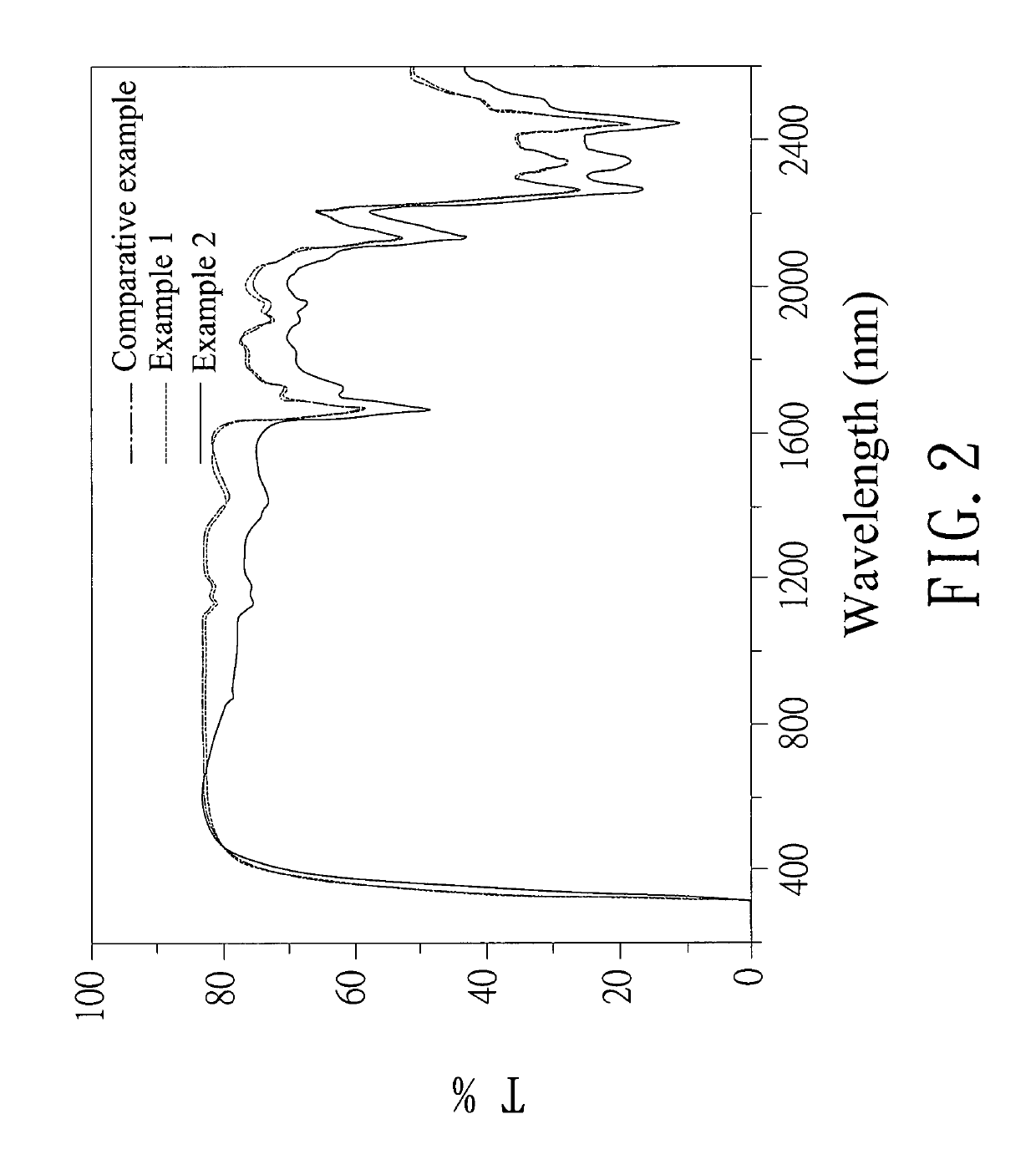Catalytic composition for preparing PET resin
- Summary
- Abstract
- Description
- Claims
- Application Information
AI Technical Summary
Benefits of technology
Problems solved by technology
Method used
Image
Examples
preparation examples
[0023]The preparation of the catalytic composition is as follow. First, the powder of cesium tungsten oxide (from Almighty Green Material Inc., Taiwan) was added into ethylene glycol to prepare an 8.8 wt % solution. Relative to the weight of the powder, 91 wt % of a polymeric type dispersant was then added. 0.5 mm yttrium zirconium beads were used to grind and disperse the mixture above to obtain a nano-disperse liquid. The particle diameter was 91.8 nm measured by a laser particle size analyzer. The dispersion solution and the TBT catalyst (20 ppm, relative to the theoretical weight of PET) were mixed according to the needed concentration to prepare the catalytic composition of this invention. The weight ratio of the cesium tungsten oxide and the polycondensation catalyst was 0.005-40.
example 1
[0024]400 g of BHET monomer and 20 g of ethylene glycol were weighted and put in a reactor. 0.056 g of TBT catalyst (20 ppm, relative to the theoretical weight of the PET), 0.084 g of cesium tungsten oxide dispersion liquid (10 ppm of cesium tungsten oxide, relative to the theoretical weight of the PET), and 0.03 g of phosphoric acid (24.5 ppm, relative to the theoretical weight of the PET) were then added. The reaction temperature was 260° C. After reacting for 10 minutes, the pressure was gradually decreased to 60 mmHg for about 30 minutes. The temperature was then increased to 280° C., and the pressure was further decreased to 1 torr (about 1 mmHg). The reaction was continued until the torque value displayed by the stirrer reached a fixed value. Next, the steps of the solid-state polymerization were described below. 50-100 g of polymerized PET product was placed in a furnace under vacuum, and the temperature was increased from room temperature to 215° C. in about 1 hour. The temp...
example 2
[0025]400 g of BHET monomer and 20 g of ethylene glycol were weighted and put in a reactor. 0.056 g of TBT catalyst (20 ppm, relative to the theoretical weight of the PET), 0.420 g of cesium tungsten oxide dispersion liquid (50 ppm of cesium tungsten oxide, relative to the theoretical weight of the PET), and 0.03 g of phosphoric acid (24.5 ppm, relative to the theoretical weight of the PET) were then added. The reaction temperature was 260° C. After reacting for 10 minutes, the pressure was gradually decreased to 60 mmHg for about 30 minutes. The temperature was then increased to 280° C., and the pressure was further decreased to 1 torr (about 1 mmHg). The reaction was continued until the torque value displayed by the stirrer reached a fixed value. Next, the steps of the solid-state polymerization were described below. 50-100 g of polymerized PET product was placed in a furnace under vacuum, and the temperature was increased from room temperature to 215° C. in about 1 hour. The temp...
PUM
| Property | Measurement | Unit |
|---|---|---|
| Fraction | aaaaa | aaaaa |
| Fraction | aaaaa | aaaaa |
| Diameter | aaaaa | aaaaa |
Abstract
Description
Claims
Application Information
 Login to View More
Login to View More - R&D Engineer
- R&D Manager
- IP Professional
- Industry Leading Data Capabilities
- Powerful AI technology
- Patent DNA Extraction
Browse by: Latest US Patents, China's latest patents, Technical Efficacy Thesaurus, Application Domain, Technology Topic, Popular Technical Reports.
© 2024 PatSnap. All rights reserved.Legal|Privacy policy|Modern Slavery Act Transparency Statement|Sitemap|About US| Contact US: help@patsnap.com









